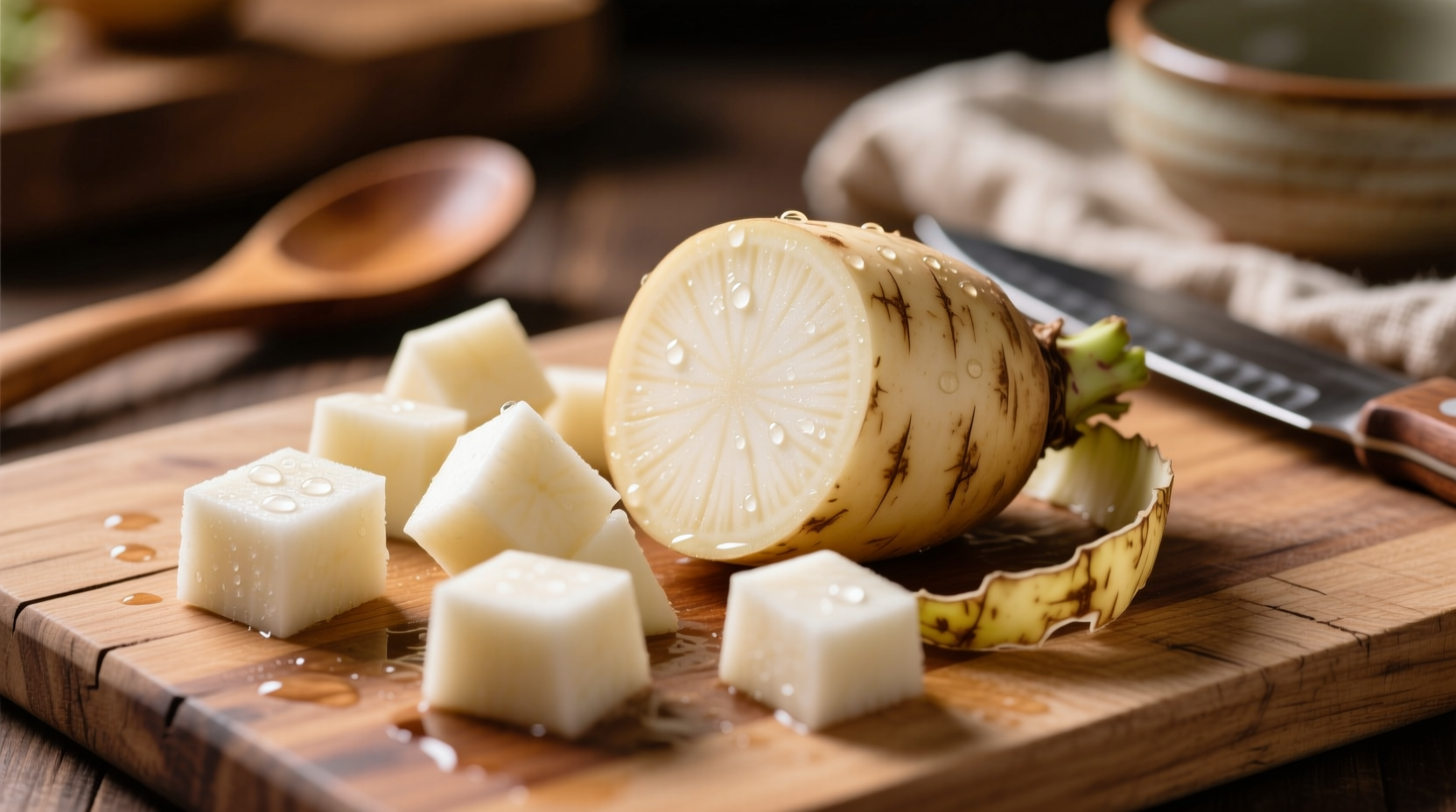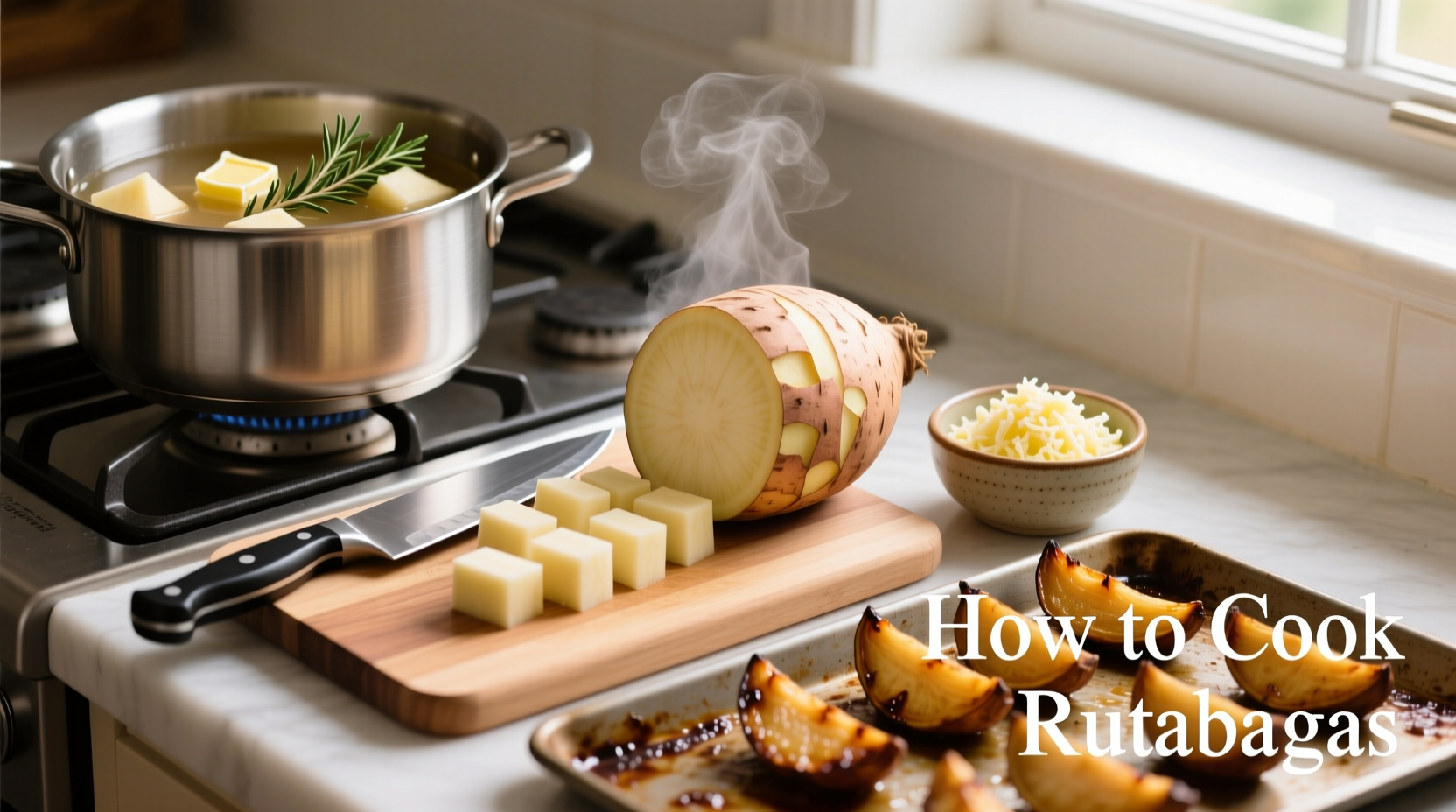The best way to cook rutabagas is to peel, cube, and either roast at 400°F (200°C) for 30-40 minutes until caramelized and tender, or boil for 25-30 minutes until fork-tender for mashing. Rutabagas pair exceptionally well with butter, thyme, rosemary, and a touch of maple syrup. Properly stored in a cool, dark place, rutabagas can last up to 4 weeks before cooking.
Discover the full potential of this underrated root vegetable with our comprehensive guide to cooking rutabagas. Often overlooked in favor of more familiar potatoes and turnips, rutabagas offer a unique sweet-earthy flavor and impressive nutritional profile that deserves a place in your regular meal rotation. This guide provides everything you need to transform this humble vegetable into delicious, restaurant-quality dishes that will impress even seasoned home cooks.
Understanding Rutabagas: More Than Just a Winter Vegetable
Rutabagas (Brassica napus) are often confused with turnips, but they're actually a cross between turnips and cabbage. Unlike their smaller, white-and-purple relatives, rutabagas are larger, yellowish-purple, and have a smoother texture when cooked. According to the USDA Agricultural Research Service, rutabagas contain 36 calories per 100g, with significant amounts of vitamin C (25% of daily value), potassium, and dietary fiber.
| Characteristic | Rutabaga | Turnip |
|---|---|---|
| Size | 4-8 inches diameter | 2-4 inches diameter |
| Color | Yellowish-purple skin, golden flesh | Purple-white skin, white flesh |
| Taste | Sweeter, milder, less peppery | More peppery, sharper flavor |
| Texture when cooked | Smooth, creamy | Slightly grainy |
| Storage life | 3-4 weeks | 2-3 weeks |
This fact comparison from the USDA's National Nutrient Database clearly shows why rutabagas deserve special preparation techniques different from turnips. Their denser structure requires slightly longer cooking times but rewards with a superior creamy texture.
Essential Preparation Techniques
Before you can cook rutabagas, proper preparation is crucial. Their tough exterior and dense flesh require specific handling:
Selection and Storage
Choose firm rutabagas without soft spots or cracks. They should feel heavy for their size, indicating freshness. The optimal storage conditions, according to Cornell University's post-harvest research, are 32-35°F (0-2°C) with 95% humidity. In your home refrigerator's crisper drawer, rutabagas will stay fresh for 3-4 weeks when stored in a perforated plastic bag.
Peeling and Cutting Safely
Rutabagas' dense structure makes them challenging to cut. Professional chefs recommend this safe technique:
- Wash thoroughly to remove dirt
- Cut 1/4 inch off both ends to create stable flat surfaces
- Stand upright on a cutting board and carefully peel downward with a sharp chef's knife (a vegetable peeler often struggles with rutabaga skin)
- Cut in half vertically, then lay flat side down for stable cubing
- Cut into uniform 1-inch cubes for even cooking
This preparation method minimizes waste while ensuring safety—a critical consideration given rutabagas' hardness. The National Center for Home Food Preservation notes that uniform sizing is essential for consistent cooking results.

Mastering Rutabaga Cooking Methods
Each cooking technique brings out different flavor profiles in rutabagas. Understanding these methods will help you select the perfect preparation for your meal.
Roasting Rutabagas to Perfection
Roasting enhances rutabagas' natural sweetness through caramelization. For best results:
- Preheat oven to 400°F (200°C)
- Toss 1-inch cubes with 1-2 tablespoons olive oil or melted butter
- Add seasoning: 1 teaspoon thyme, 1/2 teaspoon rosemary, salt and pepper to taste
- Spread in single layer on parchment-lined baking sheet
- Roast 30-40 minutes, flipping halfway, until golden brown and fork-tender
For a touch of sweetness that complements rutabagas' earthy notes, add 1 tablespoon maple syrup during the last 10 minutes of roasting. The American Culinary Federation recommends this temperature range as optimal for root vegetable roasting without burning.
Boiling and Mashing Techniques
Mashed rutabaga makes an excellent lower-carb alternative to traditional mashed potatoes:
- Place cubed rutabaga in cold salted water
- Bring to gentle boil (avoid rapid boiling which can cause uneven cooking)
- Cook 25-30 minutes until fork-tender
- Drain thoroughly (excess water makes mash watery)
- Mash with 2-3 tablespoons butter and 1/4 cup warm milk or cream
- Season with salt, white pepper, and optional nutmeg
For creamier results, food scientists at the Culinary Institute of America recommend adding rutabaga to cold water rather than boiling water, which ensures more even cooking throughout the dense vegetable.
Sautéing and Stir-Frying Applications
Thinly sliced rutabaga works beautifully in quick-cooking applications:
- Cut into 1/4-inch slices or julienne strips
- Heat 1-2 tablespoons oil in skillet over medium-high heat
- Cook 8-10 minutes until tender-crisp, stirring occasionally
- Add 1 minced garlic clove during last 2 minutes
- Finish with lemon juice or apple cider vinegar for brightness
Flavor Pairing Science for Rutabagas
Understanding flavor chemistry helps create balanced rutabaga dishes. Rutabagas contain sulfur compounds similar to other brassicas, which pair well with certain flavors that either complement or counterbalance these notes.
Ideal Flavor Combinations
| Flavor Category | Best Pairings | Why It Works |
|---|---|---|
| Fats | Butter, olive oil, bacon fat | Carries flavor compounds and balances earthiness |
| Herbs | Thyme, rosemary, sage | Woody herbs complement earthy notes without overpowering |
| Sweet Elements | Maple syrup, apples, pears | Counteracts slight bitterness while enhancing natural sweetness |
| Acids | Lemon juice, apple cider vinegar | Cuts through richness and brightens earthy flavors |
| Proteins | Roast chicken, pork loin, ham | Savory meats balance root vegetable sweetness |
This flavor pairing framework, based on research from The Flavor Bible by Karen Page and Andrew Dornenburg, helps create harmonious dishes that showcase rutabagas at their best.
Troubleshooting Common Rutabaga Problems
Even experienced cooks encounter issues with rutabagas. Here's how to solve the most common problems:
Preventing Bitterness
If your rutabagas taste bitter:
- Choose smaller rutabagas (larger ones can be more bitter)
- Add a small potato to mashed rutabaga (1:1 ratio)
- Include a touch of sweetness like maple syrup or honey
- Avoid overcooking, which can intensify bitter compounds
Achieving Perfect Texture
Rutabagas can turn either mushy or remain hard if not cooked properly:
- Always cut into uniform sizes for even cooking
- Test for doneness 5 minutes before expected completion
- When boiling, start checking at 20 minutes
- For roasting, flip halfway through cooking time
Storage Solutions for Leftovers
Properly stored cooked rutabaga maintains quality for future meals:
- Cool completely before storing
- Store in airtight container in refrigerator for 3-4 days
- Freeze mashed rutabaga for up to 6 months (add extra butter before freezing)
- Reheat roasted rutabaga in oven at 350°F (175°C) for best texture retention
Simple Rutabaga Recipe Ideas
Put your new rutabaga knowledge into practice with these approachable recipes:
Rutabaga and Apple Mash
Peel and cube 2 medium rutabagas and 2 tart apples. Boil until tender, then mash with 3 tablespoons butter, 1/4 cup cream, salt, and white pepper. The natural pectin in apples creates a creamy texture without excess liquid.
Honey-Roasted Rutabaga Wedges
Cut rutabaga into 1/2-inch wedges. Toss with 2 tablespoons olive oil, 1 tablespoon honey, 1 teaspoon thyme, salt, and pepper. Roast at 400°F (200°C) for 35-40 minutes until caramelized. Perfect as a side for roast chicken or pork.
Rutabaga and Leek Soup
Sauté 1 chopped leek in butter until soft. Add 2 cubed rutabagas, 4 cups vegetable broth, and 1 bay leaf. Simmer 25 minutes, then blend until smooth. Stir in 1/4 cup cream and season to taste. This simple soup highlights rutabaga's delicate flavor.
Seasonal Rutabaga Applications
Rutabagas shine during colder months but can be incorporated year-round with thoughtful preparation:
- Fall: Combine with apples and sage for harvest-themed dishes
- Winter: Use in hearty stews and holiday roasts
- Spring: Pair with fresh herbs like chives and parsley in lighter preparations
- Summer: Shave thinly for raw salads with citrus dressing
The University of Minnesota Extension notes that rutabagas' sugar content increases after frost exposure, making late fall and winter the optimal seasons for the sweetest flavor profile.
Frequently Asked Questions
Do I need to peel rutabagas before cooking?
Yes, rutabagas require peeling before cooking. Their skin is thicker and tougher than potatoes and contains compounds that can impart bitterness. Unlike some root vegetables, rutabaga skin doesn't soften sufficiently during cooking to be palatable.
How can I tell when rutabagas are properly cooked?
Rutabagas are properly cooked when a fork or knife slides in with little resistance. For roasting, they should be golden brown with caramelized edges. For boiling, they should maintain their shape but yield easily to pressure. Undercooked rutabagas will feel hard in the center, while overcooked ones become mushy and fall apart.
Can I eat rutabagas raw?
Yes, young, small rutabagas can be eaten raw when thinly sliced or grated. They have a crisp texture with a mild, slightly sweet flavor when raw. Larger rutabagas tend to be too tough and fibrous for enjoyable raw consumption. Raw rutabaga works well in slaws or salads when combined with a tangy dressing to balance its earthiness.
Why do my mashed rutabagas turn out watery?
Watery mashed rutabagas typically result from insufficient draining after boiling. Always drain cooked rutabaga thoroughly in a colander and let it sit for 2-3 minutes to evaporate excess moisture. Another cause is adding too much liquid during mashing. Start with small amounts of butter or cream and add only as needed to achieve your desired consistency.
What's the best way to store cut rutabaga?
Store cut rutabaga in an airtight container with a damp paper towel in the refrigerator for up to 3 days. To prevent browning, you can submerge cut pieces in cold water with a squeeze of lemon juice. Change the water daily if storing longer than 24 hours. For longer storage, blanch cut rutabaga for 2 minutes, cool in ice water, then freeze for up to 6 months.











 浙公网安备
33010002000092号
浙公网安备
33010002000092号 浙B2-20120091-4
浙B2-20120091-4